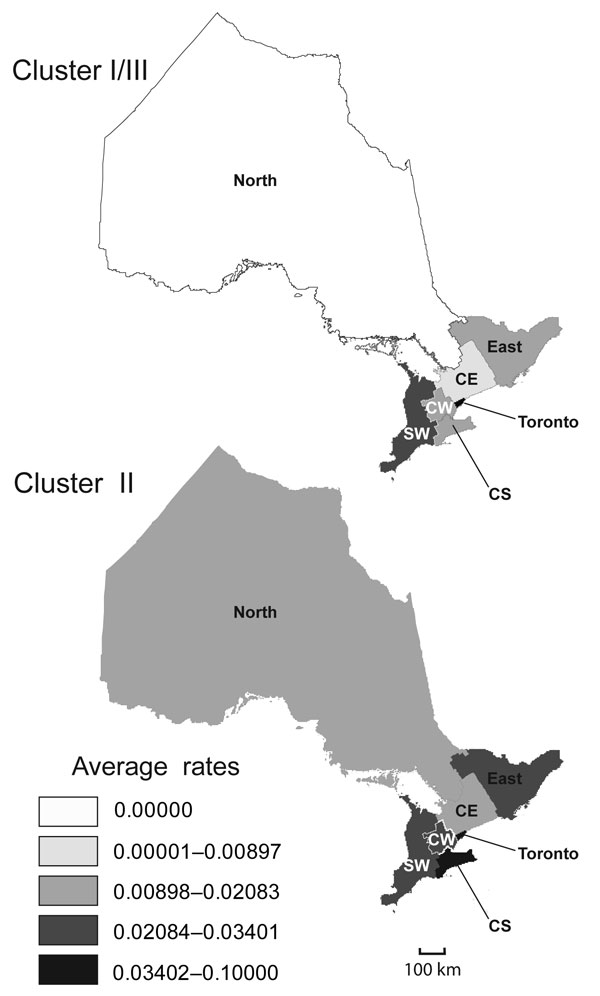Volume 16, Number 3—March 2010
Research
New Endemic Legionella pneumophila Serogroup I Clones, Ontario, Canada
Figure 6

Figure 6. Geographic distribution of phylogenetic clusters II and I/III from 1990 through 2007. Rates are cases of infection with Legionella pneumophilia serogroup 1 clones per 100,000 persons per year. The province of Ontario was divided into 7 health regions (OHRs) with populations ranging from ≈0.5 to 2 million persons: Toronto, South West (SW), Central South (CS), Central West (CW), Central East (CE), East, and North.
Page created: December 14, 2010
Page updated: December 14, 2010
Page reviewed: December 14, 2010
The conclusions, findings, and opinions expressed by authors contributing to this journal do not necessarily reflect the official position of the U.S. Department of Health and Human Services, the Public Health Service, the Centers for Disease Control and Prevention, or the authors' affiliated institutions. Use of trade names is for identification only and does not imply endorsement by any of the groups named above.